Abstract
Unless periodically grown from germinated spores, Clostridium acetobutylicum tends to degenerate (that is, to spontaneously lose the capacity both to produce solvents and to develop into spores). To obtain mutants that are deficient in degeneration, C. acetobutylicum NCIMB 8052 was mated with Enterococcus faecalis BM4110 harboring transposon Tn1545. We developed a degeneration resistance assay based on a secondary effect of degeneration, the production of toxic levels of acetic and butyric acids. Erythromycin-resistant transconjugant clones were tested individually for longevity by repeated and timely subculturing. One long-lived mutant, A10, survived 18 ± 3 transfers (mean ± standard deviation; n = 20) before extinction, while the wild type (parental cells) survived 6.6 ± 1.5 transfers (n = 11). The three-fold difference in longevity is statistically significant. In a batch culture in a rich medium, the wild-type cells degenerated within 24 h after inoculation with 1% of an overnight culture derived from germinated spores. In contrast, A10 cells were able to switch to solventogenesis and to sporulate. In a minimal medium with greater buffering capacity, both cell types produced solvents and spores. Southern blots of EcoRI and HindIII restriction digests of A10 chromosomal DNA (but not parental DNA) showed that only one copy of Tn1545 was inserted into the clostridial chromosome. Our findings are consistent with the hypothesis that there was an alteration at a regulatory locus that was effected by the insertion of the transposon.
Full text
PDF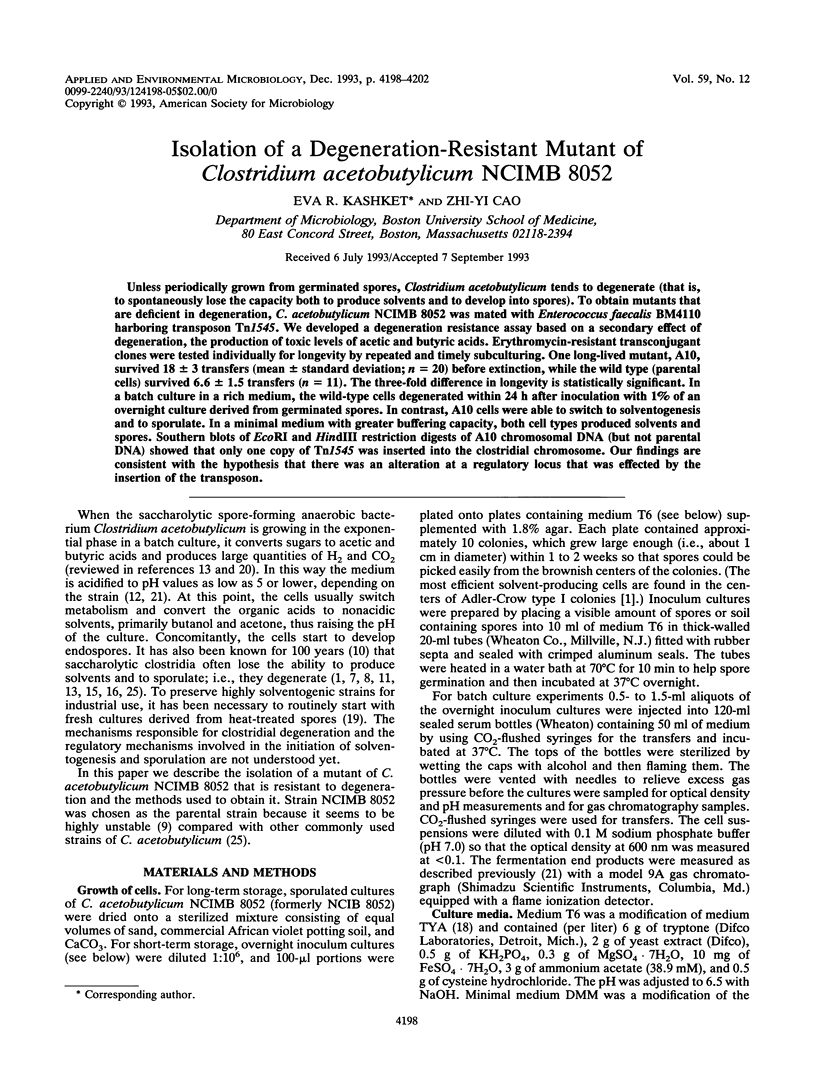
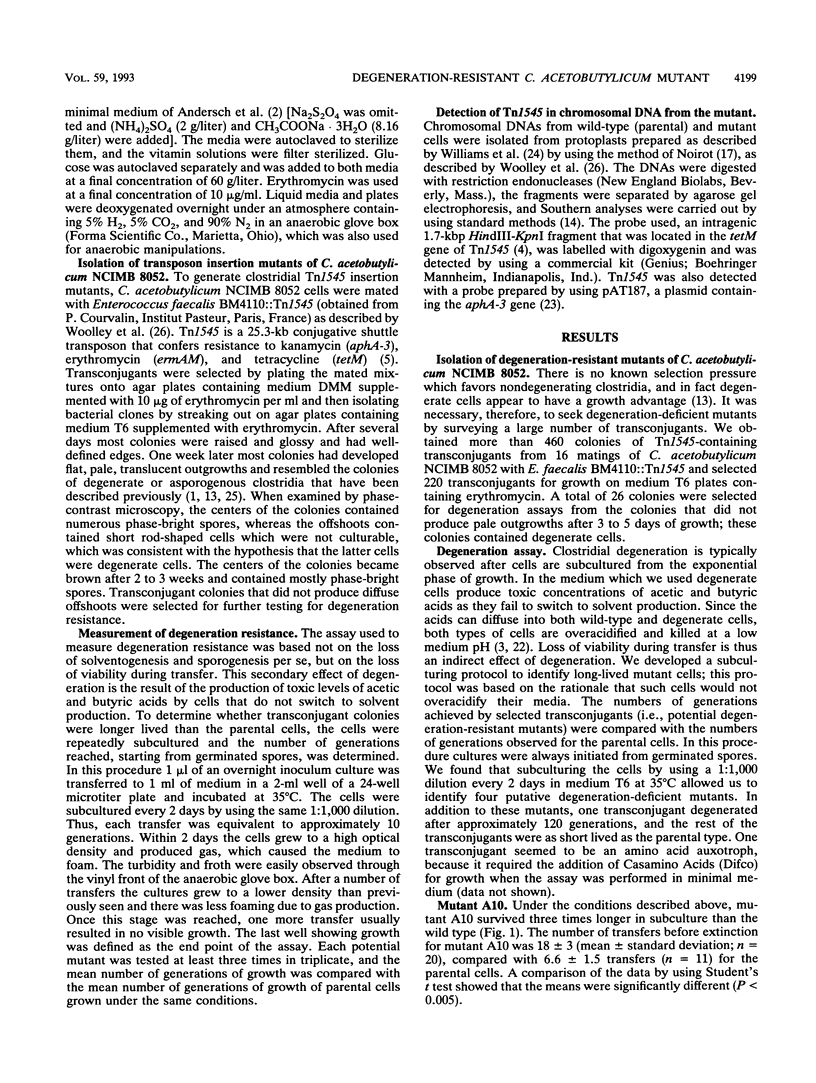
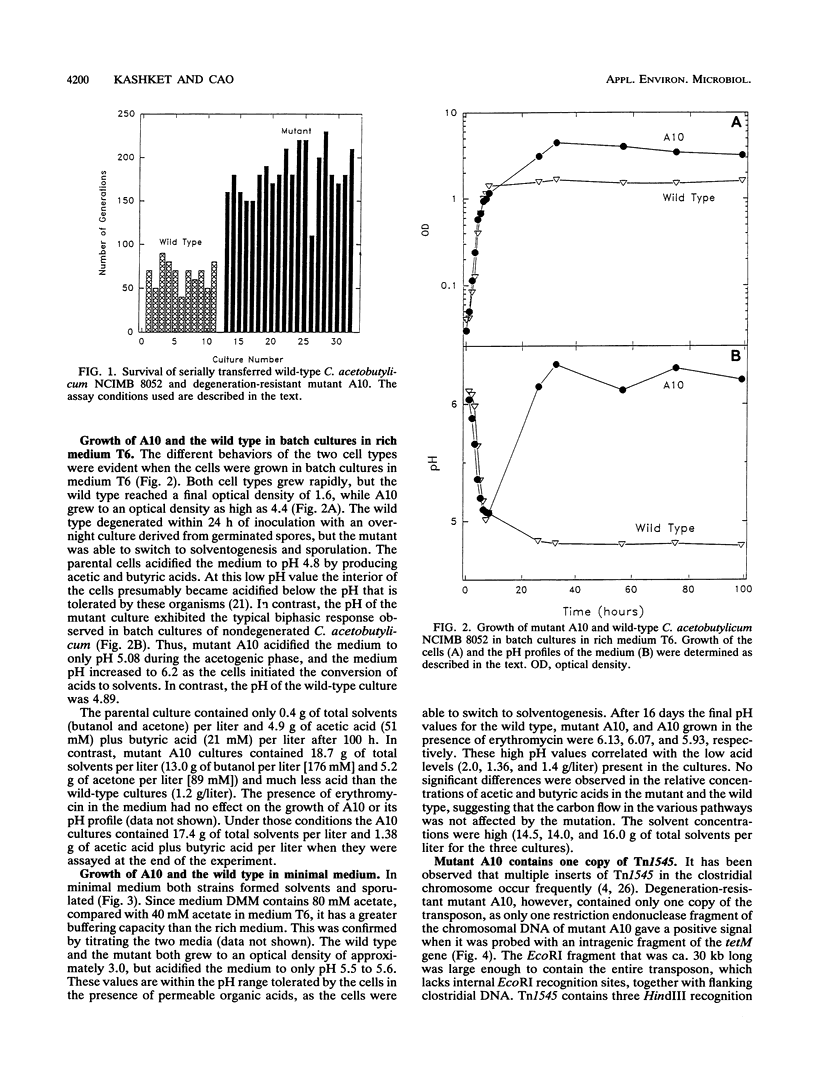
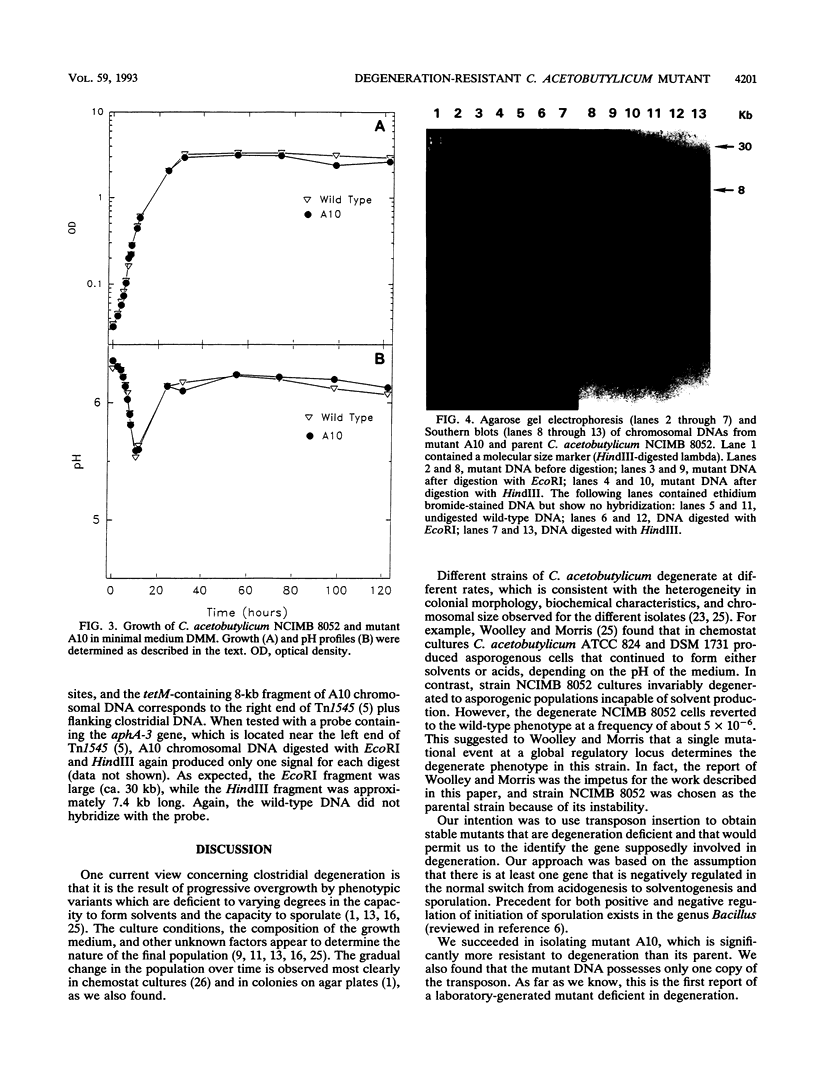
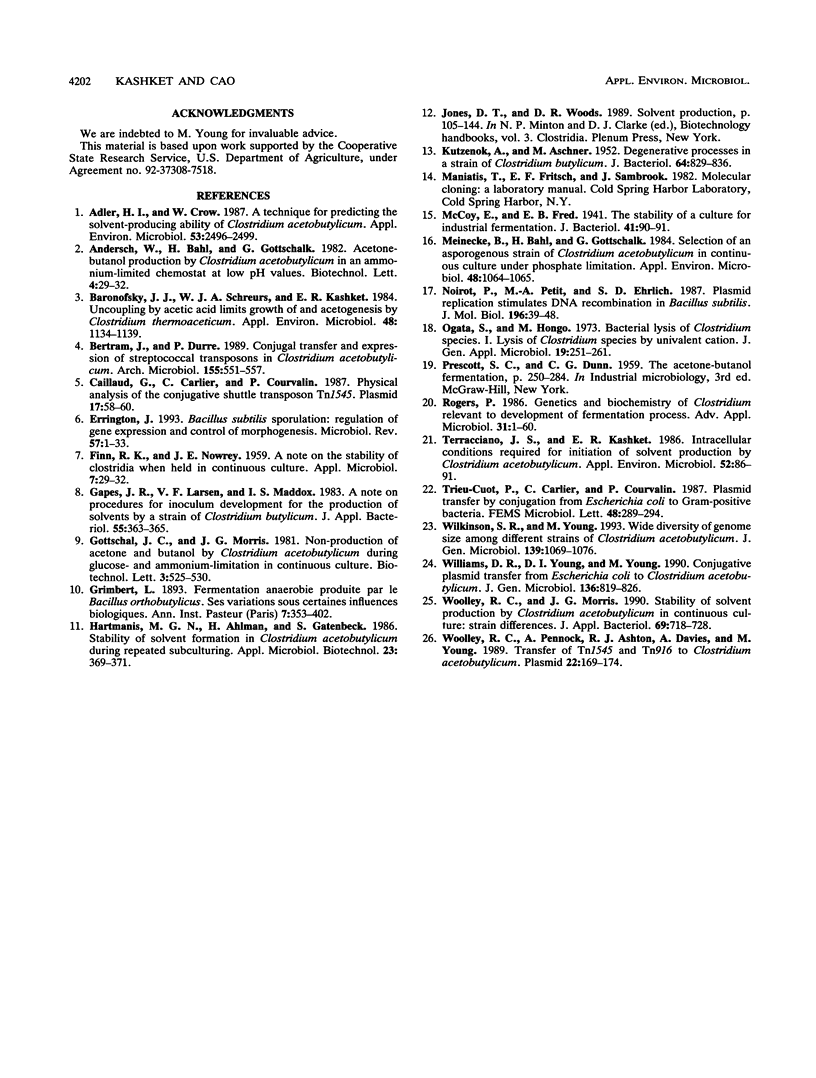
Images in this article
Selected References
These references are in PubMed. This may not be the complete list of references from this article.
- Adler H. I., Crow W. A Technique for Predicting the Solvent-Producing Ability of Clostridium acetobutylicum. Appl Environ Microbiol. 1987 Oct;53(10):2496–2499. doi: 10.1128/aem.53.10.2496-2499.1987. [DOI] [PMC free article] [PubMed] [Google Scholar]
- Baronofsky J. J., Schreurs W. J., Kashket E. R. Uncoupling by Acetic Acid Limits Growth of and Acetogenesis by Clostridium thermoaceticum. Appl Environ Microbiol. 1984 Dec;48(6):1134–1139. doi: 10.1128/aem.48.6.1134-1139.1984. [DOI] [PMC free article] [PubMed] [Google Scholar]
- Caillaud F., Carlier C., Courvalin P. Physical analysis of the conjugative shuttle transposon Tn1545. Plasmid. 1987 Jan;17(1):58–60. doi: 10.1016/0147-619x(87)90009-6. [DOI] [PubMed] [Google Scholar]
- Errington J. Bacillus subtilis sporulation: regulation of gene expression and control of morphogenesis. Microbiol Rev. 1993 Mar;57(1):1–33. doi: 10.1128/mr.57.1.1-33.1993. [DOI] [PMC free article] [PubMed] [Google Scholar]
- FINN R. K., NOWREY J. E. A note on the stability of clostridia when held in continuous culture. Appl Microbiol. 1959 Jan;7(1):29–32. doi: 10.1128/am.7.1.29-32.1959. [DOI] [PMC free article] [PubMed] [Google Scholar]
- KUTZENOK A., ASCHNER M. Degenerative processes in a strain of Clostridium butylicum. J Bacteriol. 1952 Dec;64(6):829–836. doi: 10.1128/jb.64.6.829-836.1952. [DOI] [PMC free article] [PubMed] [Google Scholar]
- Meinecke B., Bahl H., Gottschalk G. Selection of an Asporogenous Strain of Clostridium acetobutylicum in Continuous Culture Under Phosphate Limitation. Appl Environ Microbiol. 1984 Nov;48(5):1064–1065. doi: 10.1128/aem.48.5.1064-1065.1984. [DOI] [PMC free article] [PubMed] [Google Scholar]
- Noirot P., Petit M. A., Ehrlich S. D. Plasmid replication stimulates DNA recombination in Bacillus subtilis. J Mol Biol. 1987 Jul 5;196(1):39–48. doi: 10.1016/0022-2836(87)90509-2. [DOI] [PubMed] [Google Scholar]
- Terracciano J. S., Kashket E. R. Intracellular Conditions Required for Initiation of Solvent Production by Clostridium acetobutylicum. Appl Environ Microbiol. 1986 Jul;52(1):86–91. doi: 10.1128/aem.52.1.86-91.1986. [DOI] [PMC free article] [PubMed] [Google Scholar]
- Williams D. R., Young D. I., Young M. Conjugative plasmid transfer from Escherichia coli to Clostridium acetobutylicum. J Gen Microbiol. 1990 May;136(5):819–826. doi: 10.1099/00221287-136-5-819. [DOI] [PubMed] [Google Scholar]
- Woolley R. C., Pennock A., Ashton R. J., Davies A., Young M. Transfer of Tn1545 and Tn916 to Clostridium acetobutylicum. Plasmid. 1989 Sep;22(2):169–174. doi: 10.1016/0147-619x(89)90027-9. [DOI] [PubMed] [Google Scholar]



